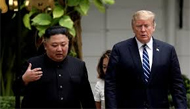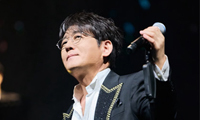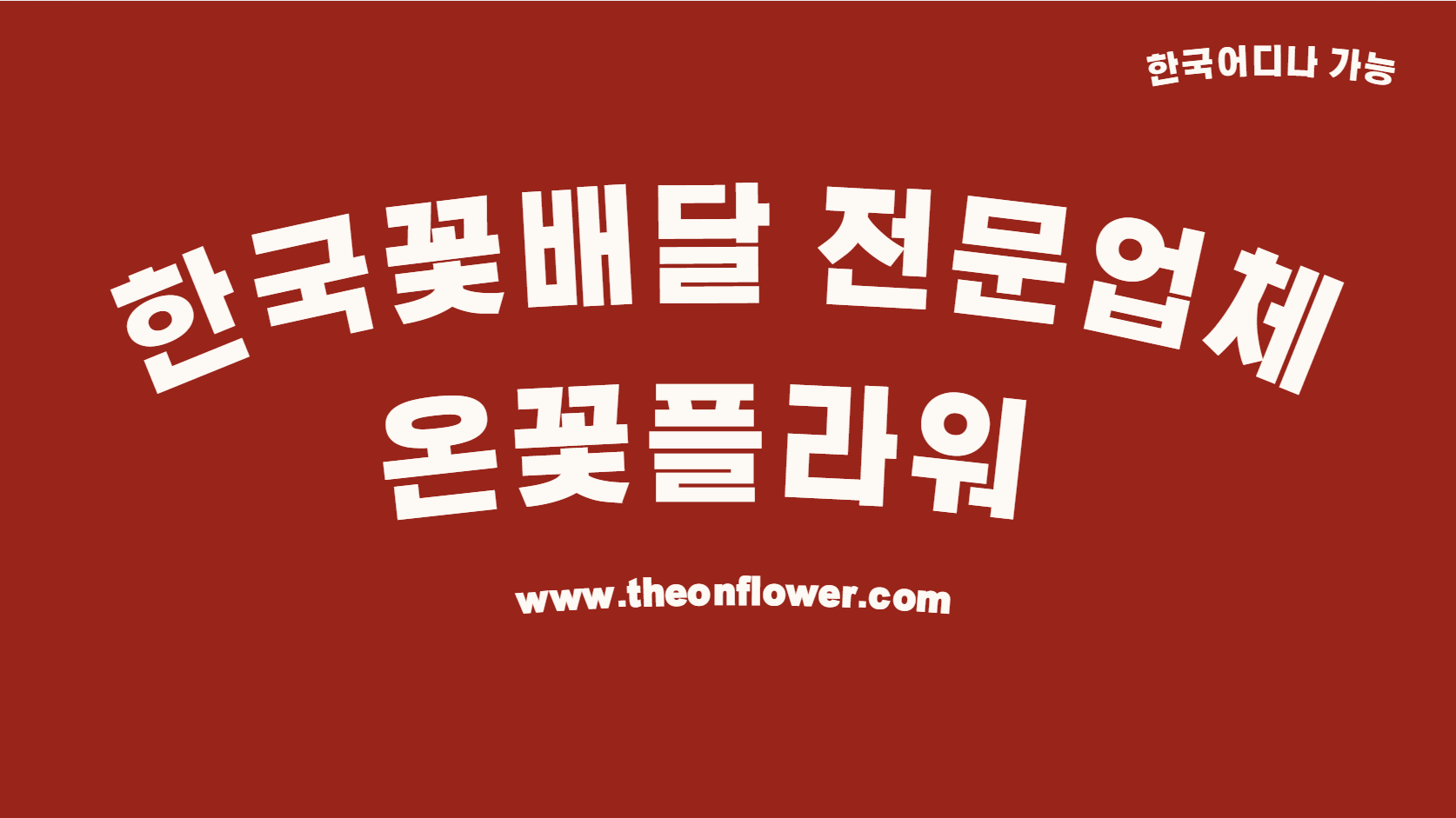Forging an Identity through Blood and Tears
▶ ■ 삼일 운동 백주년 기념 경운 장학회 주최 제9회 영어 웅변대회 수상작
▶ 1st place Winner -William Chung
2,000,000 proud Koreans taking part in more than 1,500 demonstrations. And in that year, more than 7,000 Koreans were massacred by the brutal Japanese regime. Homes, schools, and churches were burnt down to the ground, while innocent people were gunned and stabbed until the streets were painted red. And if you look at the objective point of view from history, the March 1st Movement did not result in the liberation of Korea from Japan.
Do protests still have a place in modern society? Are they an actual effective tool to fight oppressive regimes or to make meaningful changes in history? Here, in the United States of America, four of the five biggest protests in American history have occurred in the past 4 years. The Women’s March, March for our Lives, and the March for Science all had over a million protesters throughout the nation, fighting for causes they believe in such as gun control, climate change, and protection of the LGBTQ community. I am not here to bring up today’s political climate and take either a conservative or a liberal side to the debate, but, again, from an objective point of view, those protests did not result in stricter gun control, carbon neutral policies, and instead transgender troops were banned from serving in the military. The biggest protests of American history did not result in the desired effect, of the crowd, and along with the convoluted and messy Occupy Wall Street movement almost a decade ago, it is hard not to be cynical in recent protests, no matter how large the number.
With current events in mind, what effect does the March First Movement have on us, Korean- Americans trying to form our own identity in this country? It stands as a symbol, both back in the revolution as we were clawing our way into taking Korea back, and now as we stand in modern society, a forked road in the direction of the entire world. The March First movement have created a unity of the Korean people that still runs today, resulting in a strong nationalistic identity for Koreans. If you doubt me, do you remember the outrage during the Olympics by Korean-Americans when NBC commentator Joshua Cooper Ramo stated that Japan was, “a country which occupied Korea from 1910 to 1945, but every Korean will tell you that Japan is a cultural, technological and economic example that has been so important to their own transformation.” The March First movement stands for our hardship, our struggle, as we fought to reclaim our identity.
This was crucial in the face of a culture erasure movement by the Japanese government. Thousands of historical documents were burnt. The Korean language was prohibited to being taught in schools as they attempted to transition the people into Japanese. Landscapes were forever transformed, from non-native trees and plants being brought over to make the peninsula more like Japan, along with the demolition of Korean palaces such as Gyeonbokgung [경복궁]. All of these methods were argued to be justified because Japan believed that the Korean people were rightfully Japanese, and that we needed all the help we can get to reach our full potential.
The March First movement allowed the Korean people to dismiss that idea as pure lunacy, as we persevered under a strong, Korean identity. Japan later on eased up on their brutal regime, giving Koreans a fairer wage, lessening physical punishments such as caning and water torture, and overall treated its people in a “fair” way. Yet, we did not forget the March First movement, we did not forget Ryu Gwansun, who helped organize the movement, and was beaten to death while she chanted for Korea’s freedom. We did not forget about An Jung-Geun, laying his life on the line to fight for Korea’s independence. And even though the movement did not result in Korea’s liberation, it helped preserve the Korean identity and dignity for decades to come.
How can we apply this to today, as we march forward as Koreans in the United States? We can help preserve our identity by commemorating those who laid down their lives for the freedom we enjoy today. We can fight for what we believe in, just like those before us have, in peaceful protests to make our causes known. It may not result in radical changes overnight, but it gives us, the younger generation, identity and ideals to strive towards in our upcoming years. The March First movement may not have resulted in Korean liberation, but even a century later, it stands as a celebration of human rights and independence.
(12th Grade, Bergen County Academies, Hackensack, NJ)
스마터리빙
more [ 건강]
[ 건강]이제 혈관 건강도 챙기자!
[현대해운]우리 눈에 보이지 않기 때문에 혈관 건강을 챙기는 것은 결코 쉽지 않은데요. 여러분은 혈관 건강을 유지하기 위해 어떤 노력을 하시나요?
 [ 건강]
[ 건강]내 몸이 건강해지는 과일궁합
 [ 라이프]
[ 라이프]벌레야 물럿거라! 천연 해충제 만들기
 [ 건강]
[ 건강]혈압 낮추는데 좋은 식품
[현대해운]혈관 건강은 주로 노화가 진행되면서 지켜야 할 문제라고 인식되어 왔습니다. 최근 생활 패턴과 식생활의 변화로 혈관의 노화 진행이 빨라지고
사람·사람들
more
“최첨단 신차들… LA 오토쇼에서 경험하세요”
118년의 전통을 자랑하는 세계적인 자동차 축제 ‘LA 오토쇼’가 오는 21일부터 30일까지 LA 컨벤션센터에서 대대적으로 열린다. 전 세계 …

파바월드 펀드레이징 골프 토너먼트 성황
파바월드(대표 명원식)는 지난달 31일 캘리포니아 컨트리클럽에서 2025년 파바월드 펀드레이징 골프 토너먼트를 개최했다. 130여 명의 후원자…
KAMA USA 시니어모델협 8일 기금 마련 바자…
KAMA USA 시니어모델협회(회장 백은경)가 오는 8일(토) 오전 11시부터 오후 2시30분까지 LA 한인타운 윌셔와 후버 코너에 위치한 컬…
타운에 첫 한인 운영 수학·과학 정규학교
LA 한인타운에 수학·과학에 특화된 정규 사립중학교 ‘윈저 아카데미’(WMSA, 4055 Wilshire Blvd. #400, LA)가 지난 …
서각협회 ‘서각 교류전’ 11월1일 리앤리 갤러리
한국목우서각협회(회장 정기호)와 미주한인서각협회(회장 이애령)가 11월 1~8일 LA 한인타운 리앤리 갤러리에서 서각교류전을 갖는다.가주 의회…
많이 본 기사
- 버지니아 첫 여성 주지사 탄생, 스팬버거 역사적 승리
- 캘리포니아, 전기자전거 보조금 전격 중단…예산 전기차로 전환 논란
- 트럼프, 對中관세 10%P 인하 행정명령 서명…10일부터 시행
- ‘출구 못찾는’ 연방정부 셧다운…5일부로 ‘역대최장’ 36일
- 법원, 중국인 부동산 매입 규제한 플로리다州 손들어줘
- 켄터키주서 UPS 화물기 이륙 중 추락…최소 3명 사망
- ‘250억달러 미국산 무기구매’ 한미정상회담 팩트시트에 담길 듯
- 트럼프, NASA 국장 후보로 머스크 측근 아이작먼 다시 지명
- [사이테크+] “심근경색 후 심장에 직접 붙여 회복 돕는 약물전달 패치 개발”
- 대형마트 판매 즉석 파스타 먹고 6명 식중독 사망
- 美, 마두로 축출 등 베네수 겨냥 다양한 군사옵션 검토[NYT ]
- ‘AI가 또’…아마존·메타 이어 IBM도 수천명 감원
- MLS서 석 달 뛴 손흥민, ‘올해의 신인’ 투표서 2위
- 트럼프 “필버 종결하고 셧다운 끝내야…아니면 민주당이 이겨”
- 韓 10월 말 외환보유액 4천288억달러로 68억달러↑…5개월째 증가
- 피해 금액 얼마길래..성시경, 결혼식까지 챙긴 매니저 배신에 참담
- 브라질 룰라 “美관세 협상 교착시 트럼프와 통화하거나 방미”
- 백악관 “大法, ‘관세재판’서 옳은 판결할것…플랜B는 항상 준비”
- 文정부 안보라인 ‘서해피격 사건’ 오늘 1심 마무리…기소 3년만
- 고물가 속 ‘대출의 덫’ 빠진 미국… ‘중산층 붕괴’
- 피말렸던 뉴욕시장 · 뉴저지주지사 ‘오늘 결판’
- ‘연일 내리막길’ 비트코인, 결국 10만달러 붕괴…6월 이후 처음
- 베네수엘라, 암호화폐 이용 돈세탁 정황… “169억5천만 달러 규모”
- ‘쇼핑은 내 구역’ 아마존, 퍼플렉시티에 ‘AI쇼핑’ 중단 요구
- 슬기로운시니어생활 42회
- 글로벌 제약사 ‘살빼는 약’ 업체 인수전 가열
- 뉴욕증시, AI 기술주 고평가 우려에 하락…나스닥 2%↓
- ‘간판 삼총사’ 빠진 레이커스, 빅맨들이 구했다… 4연승 행진
- 워싱턴 레이건공항 ‘폭탄 위협’에 한때 활주로 폐쇄
- 이천수, 억대 사기 혐의 피소.. “생활비 1억3천 빌리고 연락 두절”
- 비트코인 ‘업토버’ 7년 만에 끝났다
- 권일연 회장(H 마트 창립자),‘아시안 명예의 전당’헌액
- 카르텔 폭력 심화에 성난 멕시코 주민들…연일 거센 시위
- 보잉 7년 적자 끝 ‘턴어라운드’ 조짐 ...월가 “주가 최대 50% 상승도”…엔지니어 출신 CEO 기대
- 트럼프 2기 첫 일반선거 개시…뉴욕시장·뉴저지·버지니아 주지사 선거서 민주·공화 격돌
- 스타벅스까지…미국 기업들 중국 시장서 발빼나
- 미용사 된 이지현, 헤어 시술 예약 중단.. “졸업 얼마 안 남아”
- 22기 워싱턴 평통 86명 확정
- 김민재 ‘배신자 낙인’ 찍힐라, 옛 스승 러브콜 반가운데 하필 ‘나폴리 라이벌’
- GG 코리아타운 한인 시니어 ‘보금자리’
- 우리가 감사하며 살아가야 할 생명체
- 올라이브 30곡-210분 역대급 귀호강 무대! ‘데뷔 35주년’ 신승훈 단독 콘서트 ‘SINCERELY 35’ 대성황
- [존청 변호사의 “경제·법률 핫이슈”] 내 집 한 채가 전부인데… 리빙 트러스트가 정말 필요한가?
- 성유리, 2년만 예능 복귀.. ‘핑클 맏언니’ 이효리→박하선 응원
- 연방정부 셧다운 상황 속 오바마케어 갱신 등록 시작
- 韓 국정원 “북미회담 가능성 커…내년 3월 정세 분기점 될 듯”
- KCS, 오늘 식료품 패키지 무료 배부
- “편도 수술, 해? 말어?” 고민 끝… 기준 정해드립니다
- 국토안보부 “운전면허 기록 공유하라” 파문
- 셧다운발 항공 ‘대혼란’… LAX 등 운항 차질 심화
1/5지식톡

-
 테슬라 자동차 시트커버 장착
0
테슬라 자동차 시트커버 장착
0테슬라 시트커버, 사놓고 아직 못 씌우셨죠?장착이 생각보다 쉽지 않습니다.20년 경력 전문가에게 맡기세요 — 깔끔하고 딱 맞게 장착해드립니다!장착비용:앞좌석: $40뒷좌석: $60앞·뒷좌석 …
-
 식당용 부탄가스
0
식당용 부탄가스
0식당용 부탄가스 홀세일 합니다 로스앤젤레스 다운타운 픽업 가능 안녕 하세요?강아지 & 고양이 모든 애완동물 / 반려동물 식품 & 모든 애완동물/반려동물 관련 제품들 전문적으로 홀세일/취급하는 회사 입니다 100% …
-
 ACSL 국제 컴퓨터 과학 대회, …
0
ACSL 국제 컴퓨터 과학 대회, …
0웹사이트 : www.eduspot.co.kr 카카오톡 상담하기 : https://pf.kakao.com/_BEQWxb블로그 : https://blog.naver.com/eduspotmain안녕하세요, 에듀스팟입니다…
-
 바디프렌드 안마의자 창고 리퍼브 세…
0
바디프렌드 안마의자 창고 리퍼브 세…
0거의 새제품급 리퍼브 안마의자 대방출 한다고 합니다!8월 23일(토)…24일(일) 단 이틀!특가 판매가Famille: $500 ~ $1,000Falcon: $1,500 ~ $2,500픽업 & 배송직접 픽업 가능LA…
-
 바디프렌드 안마의자 창고 리퍼브 세…
0
바디프렌드 안마의자 창고 리퍼브 세…
0거의 새제품급 리퍼브 안마의자 대방출 한다고 합니다!8월 23일(토)…24일(일) 단 이틀!특가 판매가Famille: $500 ~ $1,000Falcon: $1,500 ~ $2,500픽업 & 배송직접 픽업 가능LA…
케이타운 1번가
오피니언
 문태기 OC지국장
문태기 OC지국장 GG 코리아타운 한인 시니어 ‘보금자리’
 민경훈 논설위원
민경훈 논설위원우리가 감사하며 살아가야 할 생명체
 박홍용 경제부 차장
박홍용 경제부 차장 AI 혁명의 명암, 샌앤젤레스가 던지는 경고
 정유환 수필가
정유환 수필가 [화요칼럼] 캘리에서 온 가을
 이영태 / 한국일보 논설위원
이영태 / 한국일보 논설위원 [지평선] 러너들에게만 천국인 서울
 이육사
이육사 ‘서풍’
 옥세철 논설위원
옥세철 논설위원인구 고령화, 그 예기치 않은 선물은…

남아선호는 옛말(?)
 캐슬린 파커 워싱턴포스트 칼럼니스트
캐슬린 파커 워싱턴포스트 칼럼니스트 [캐슬린 파커 칼럼] ‘트럼프 연회장’은 도금된 창고
1/3지사별 뉴스

피말렸던 뉴욕시장 · 뉴저지주지사 ‘오늘 결판’
미 전국에서 초미의 관심사로 떠오른 차기 뉴욕시장과 뉴저지주지사를 뽑기 위한 선택의 날이 밝았다. 뉴욕과 뉴저지 본선거가 4일 지역별로 설치돼…
연방정부, 11월 푸드스탬프 일부 지급한다

22기 워싱턴 평통 86명 확정
제22기 민주평화통일자문회의가 출범했다.평통 의장인 이재명 대통령은 지난달 28일 ‘평화공존과 공동성장의 한반도 새 시대’를 열어갈 제22기 …
연방정부 셧다운 상황 속 오바마케어 갱신 등록 시작

셧다운발 항공 ‘대혼란’… LAX 등 운항 차질 심화
연방정부 셧다운이 4일로 35일째를 맞으며 역대 최장 기간 타이로 기록된 가운데 이로 인해 미국 항공 운송 시스템이 사실상 마비 위기로 치닫고…
“총영사관 등 사칭 보이스피싱 주의 하세요”

오늘 하루 이 창 열지 않음 닫기 



















































.png)


댓글 안에 당신의 성숙함도 담아 주세요.
'오늘의 한마디'는 기사에 대하여 자신의 생각을 말하고 남의 생각을 들으며 서로 다양한 의견을 나누는 공간입니다. 그러나 간혹 불건전한 내용을 올리시는 분들이 계셔서 건전한 인터넷문화 정착을 위해 아래와 같은 운영원칙을 적용합니다.
자체 모니터링을 통해 아래에 해당하는 내용이 포함된 댓글이 발견되면 예고없이 삭제 조치를 하겠습니다.
불건전한 댓글을 올리거나, 이름에 비속어 및 상대방의 불쾌감을 주는 단어를 사용, 유명인 또는 특정 일반인을 사칭하는 경우 이용에 대한 차단 제재를 받을 수 있습니다. 차단될 경우, 일주일간 댓글을 달수 없게 됩니다.
명예훼손, 개인정보 유출, 욕설 등 법률에 위반되는 댓글은 관계 법령에 의거 민형사상 처벌을 받을 수 있으니 이용에 주의를 부탁드립니다.
Close
x